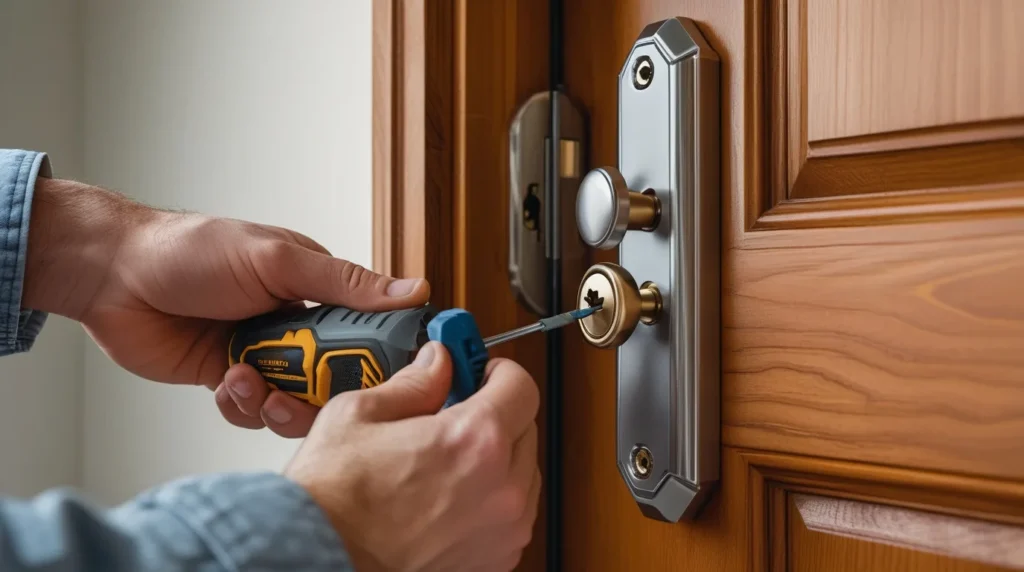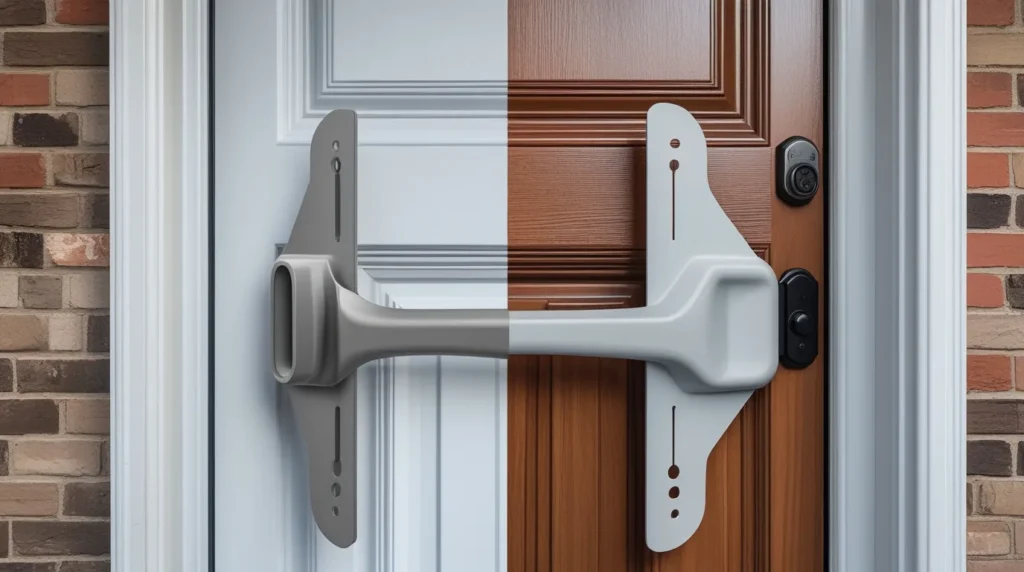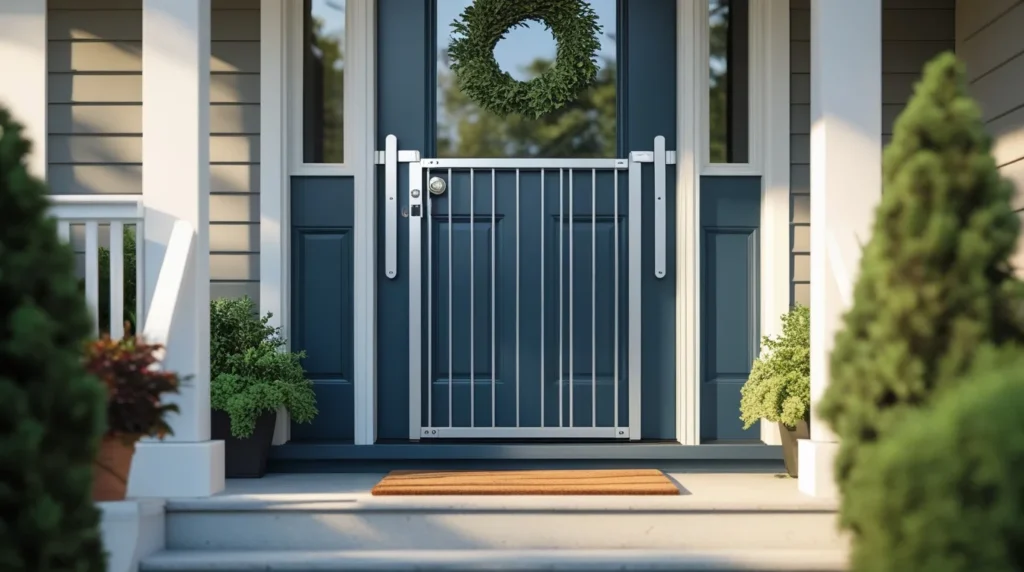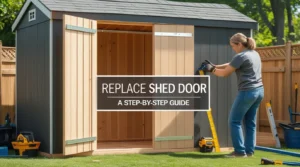Home safety matters to everyone. Whether you live in a small home or a large one, your front and back doors are the first line of defense. That’s why knowing how to install door security guard is one of the smartest things a homeowner can learn. Door security guards are simple tools, but they add a powerful layer of protection to your home. In this guide, we’ll explain everything step by step, using easy language that anyone can follow.

Why Home Security Starts with Strong Door Protection
Your home is where your family feels safest. But even good doors can have weak spots. Most break-ins happen through the door, and many times, it’s not because of the lock but because the door wasn’t reinforced.
Adding a door security guard helps block forced entry and keeps the door in place even if someone tries to kick it open. These guards are made of metal and are installed near the lock or handle to add strength where it matters most. It’s a small step that makes a big difference.
What Is a Door Security Guard and Why Should You Install One?
A door security guard is a metal plate or latch that’s placed on or around your door’s locking area. It protects the lock, door frame, and handle from pressure or impact. Think of it as a shield for your door. It doesn’t replace the lock it adds strength to it.
People install these guards for many reasons:
- To make their front door more secure
- To protect older doors that may be worn down
- To feel safer at night or when away from home
- To add extra protection for kids and family
Installing a guard takes little time but adds long-lasting safety.
Types of Door Security Guards Available For Homeowners
Before you begin installation, it’s good to know what kind of door security guard you need. Here are a few common types:
1. Latch Guards
These are flat metal plates that cover the latch area on your door. They prevent someone from prying open the door at the latch point.
2. Lock Reinforcement Plates
These are installed around the deadbolt or door knob area to make the locking mechanism stronger.
3. Door Jamb Guards
These protect the door frame from breaking during forced entry.
4. Strike Plate Reinforcements
These small plates go on the door frame and help keep the deadbolt tight and secure.
Choosing the right one depends on your door type, its material, and how much extra security you want.
How to Choose the Right Door Guard for Your Door Type
Doors come in all kinds wood, metal, fiberglass, and composite. That’s why not every guard fits every door. Here’s how to choose:
- For wooden doors: Use metal latch guards or reinforcement plates. Wood can crack, so extra metal helps.
- For steel doors: Choose screw-in lock guards that won’t damage the metal surface.
- For old doors: Use wraparound plates that protect worn-out lock areas.
- For patio doors: Go with latch guards that work with sliding mechanisms.
Also, make sure the guard’s color and shape match your door’s look. Security doesn’t have to look bulky or odd it can blend in nicely.

Step-by-Step Door Guard Installation: Tools and Preparation
Before you start the actual job, gather your tools and take a few measurements. Here’s what you need:
Tools Required:
- Screwdriver or drill
- Measuring tape
- Pencil or marker
- Safety glasses
- Level (optional)
- Screws (usually included with the guard)
Prep Steps:
- Open your door and locate where the guard will be placed.
- Clean the surface area of any dust or debris.
- Mark the screw holes using your pencil for accuracy.
- Hold the guard in place to double-check the fit.
Good preparation makes the installation go faster and smoother.
How To Install Door Security Guard: Easy and Safe Method
Now that you’re ready, let’s go step by step. This is the main part where we show you how to install door security guard in a simple way.
Step 1: Position the Guard
Place the guard on the door where it will provide the most support usually near the lock or latch.
Step 2: Mark the Screw Holes
Hold it steady and use a pencil to mark the screw spots. Make sure the guard is straight and not tilting.
Step 3: Drill Pilot Holes (if needed)
If your door is made of wood or metal, drilling small pilot holes makes the screws go in easier.
Step 4: Screw It In
Using a screwdriver or power drill, drive in the screws one at a time. Start with the top or center, then move to the rest.
Step 5: Test the Door
Close and open the door a few times to make sure it still works smoothly. The guard should be tight and firm, but not block movement.
That’s it! You’ve just made your door much stronger and your home a lot safer.

Door Guard Fitting Instructions: Aligning and Securing the Guard
Some guards come with special instructions for where to place them and how to align them. For example, a latch guard might need to be aligned with both the door and the frame.
Here are a few helpful tips:
- Use a level: To make sure the guard isn’t crooked.
- Keep screws tight: But don’t over-tighten, or you may crack the material.
- Align with the strike plate: Especially for latch or lock guards.
Following these fitting instructions helps your guard work better and last longer.
Installing a Door Security Latch or Latch Guard the Right Way
If your security guard includes a latch or connects to the latch area, pay attention to this part.
For Latch Guards:
- Install the plate on the outside edge of the door.
- Make sure the latch still operates properly.
- Align the guard so it fully covers the gap between the door and frame.
For Latch Covers:
- Install them on the inside if they’re designed to be childproof.
- Use long screws to anchor them deep into the door for better hold.
This is where precision matters most. A small misalignment can affect how the door closes.
Common Mistakes to Avoid During Door Lock Guard Installation
Even simple projects can go wrong if we rush or skip steps. Here are common errors and how to avoid them:
- Using the wrong screws: Always use the ones included, or check size if replacing.
- Placing the guard too high or too low: It won’t protect properly.
- Blocking the deadbolt: Make sure the guard doesn’t stop the bolt from turning.
- Skipping pilot holes: Especially in hardwood or metal doors, this can split the door.
Taking a few extra minutes to do things right can save you hours of fixing mistakes.

Professional Help or DIY? Tips from Five Window Install Spokane
While installing a door guard is something many homeowners can do on their own, sometimes it’s best to ask a pro. If your door is old, uneven, or part of a custom frame, DIY might be tricky. At Five Window Install Spokane, we’ve helped many homeowners across Spokane, WA, secure their doors with the right products and proper installation. Our team is trained to make sure everything fits well, functions correctly, and looks clean and professional. Sometimes it’s not about doing it yourself, but it’s about doing it right. And we’re here to help when you need it.
Final Tips to Secure Your Home with the Right Door Guard Setup
Adding a door guard is one of the easiest upgrades you can make to improve home safety. But remember:
- Always match the guard to your door’s size and type.
- Follow instructions carefully.
- Check and maintain the guard every few months.
- Don’t forget that the frame of your door is only as strong as the area around it.
Most importantly, think of your door guard as part of a bigger safety plan. Use strong locks, keep good lighting around your home, and stay alert to any damage to your door over time.
With the right tools, a little time, and attention to detail, your home will feel safer and more secure day or night.
Conclusion
Installing a door security guard is a smart and simple way to make your home safer. It helps protect your door from forced entry and adds strength where it’s needed most. By choosing the right guard, using the correct tools, and following each step carefully, you can do the job yourself in no time. But if things feel tricky or your door has unique needs, asking for help is always a good idea. At Five Window Install Spokane, we’ve helped many homeowners protect their doors the right way. With just one small upgrade, you can make a big difference in your family’s safety and peace of mind.






